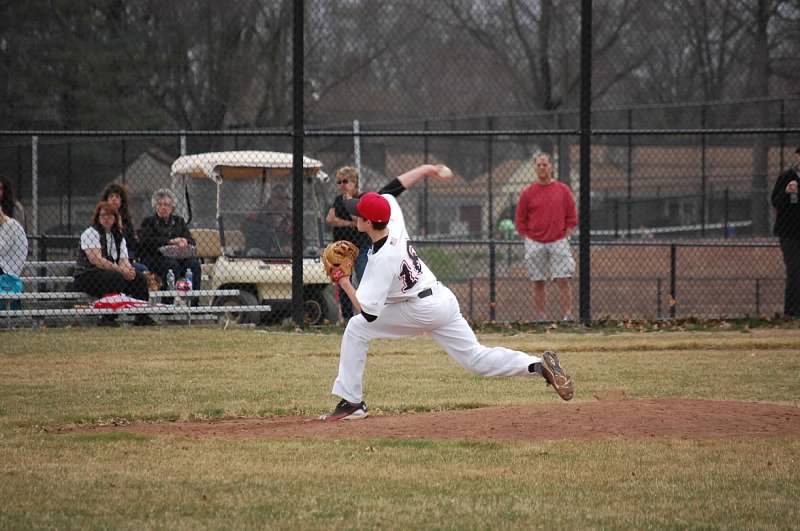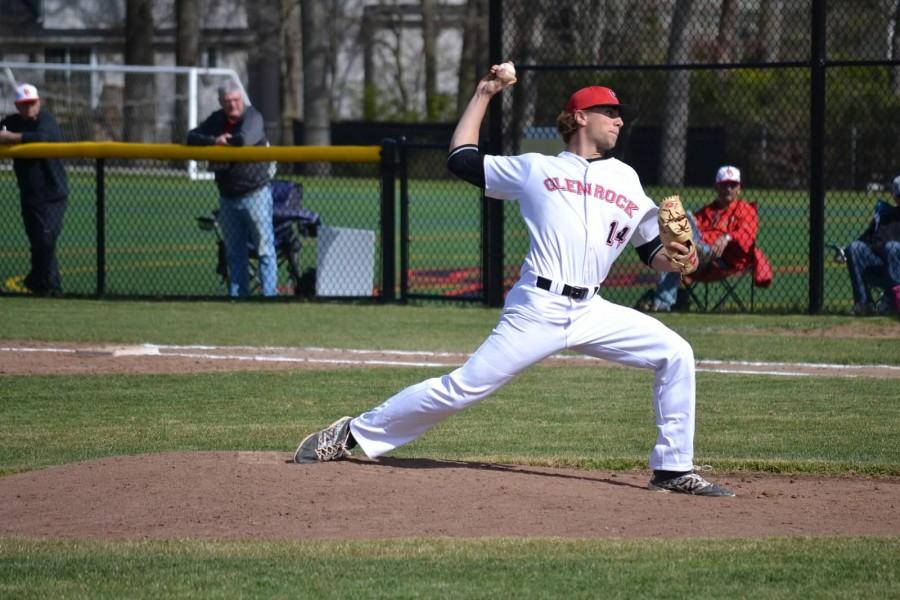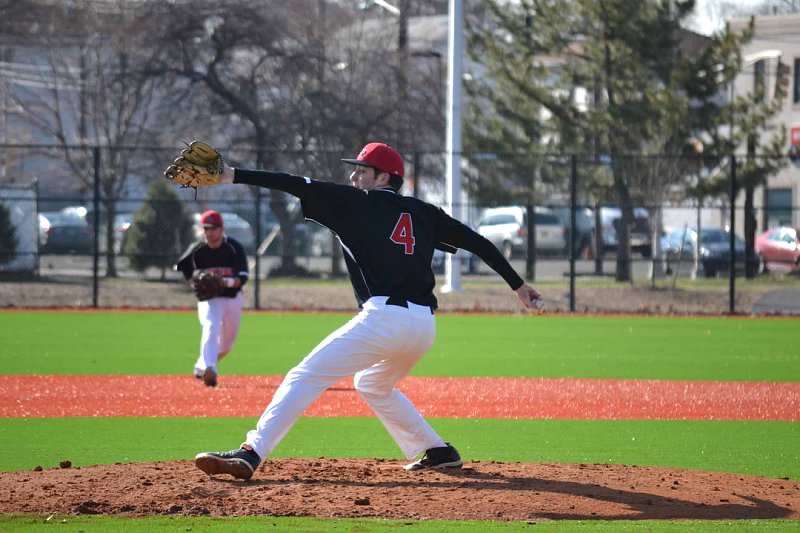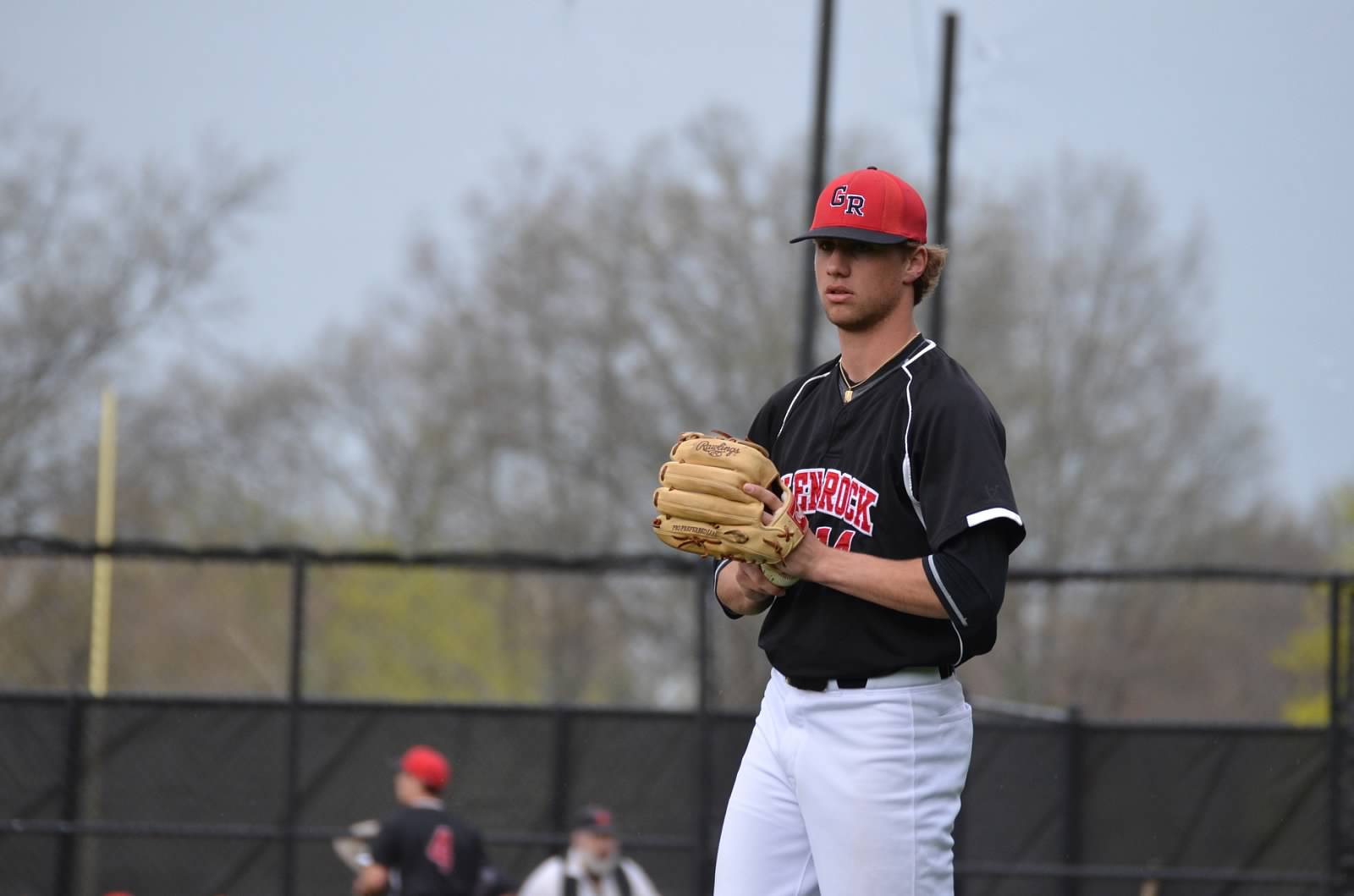Baseball’s broken arm
April 21, 2015
“It happened during an extended bullpen session,” said Glen Rock High School alumnus Jeff Kopyta. After throwing thousands of baseballs, after years of town recreational baseball, travel baseball, competitive club travel baseball, middle school baseball and the Glen Rock High School Varsity Baseball Team, with dreams of pitching for a collegiate team, Jeff Kopyta stood on a college mound, during fall practice of his freshman year and thought it was over before it had ever started. “I actually thought about quitting the sport that I grew up to love and pursue.”
As a junior at Glen Rock High School, Kopyta tore the labrum in his right shoulder but was able to fully recover, following months of rehabilitation, along with a strict throwing program. As a senior, he returned and once again dominated the competition.
But this time he knows the injury was different — and potentially much more devastating.
After feeling sharp pain in his elbow for months and trying to ignore the signs (such as a decrease in velocity), Kopyta said this time it was legitimate: “I knew for sure, it was my UCL.”
Three words, execrated by the baseball community everywhere: Tommy John Surgery. This surgery is necessary when a player ruptures his or her ulnar collateral ligament in the throwing elbow, causing severe pain. According to the website run by the Johns Hopkins Department of Orthopaedic Surgery, due to the extreme stress placed on the elbow when throwing, the ligament can tear to the point of no longer holding the bones tightly.
The typical recovery time, following the surgery, is a year. “It is a surgical graft procedure, which essentially replaces the elbow tendon with one from somewhere else in the body,” said Rich Mejias, who is a strength and conditioning trainer and owner of Next Generation Training Center in Wyckoff, New Jersey.
At the age of 19, a freshman pitcher on the University of Massachusetts at Amherst Baseball Team — the dream finally a reality — Jeff Kopyta underwent Tommy John surgery in January 2015 and legitimately contemplated the end of the baseball career that he had worked for since tee-ball.
Repeatedly throwing a five-ounce, nine inch in diameter, 108 red double-stitched ball, covered in cowhide, at any velocity can cause serious damage to an arm, possibly beyond repair. The throwing motion at high velocities is an extremely violent movement. Until the mid-1970’s, if a pitcher, at any level, tore the UCL, he would never throw a baseball again.
Such could have been the fate of Tommy John.
Tommy John was a major league baseball pitcher from 1963-1989. He accumulated 288 career wins and was considered by many to be a borderline hall of fame pitcher. In the middle of the 1974 season, while pitching for the Los Angeles Dodgers, John injured his ulnar collateral ligament but, rather than ending his career, he underwent the then revolutionary surgery that would replace the ligament in his elbow with a tendon taken from his forearm.
After his surgery and missing the entire 1975 season, John, miraculously, came back throwing harder than he did before the surgery and pitching better than he had before. Pitching for the Dodgers, Yankees and others, he remarkably compiled over half of his career winds after the 1976 season. After his return, the revolutionary procedure became known as “Tommy John Surgery.”
Now, UCL injuries appear at all levels of the sport and could be considered an epidemic at all levels of the game. Pitch counts have become the norm in baseball in order to try and keep a status on how many pitches that pitchers are throwing and how pitchers feel after throwing a certain number of pitches. This is done in an effort to avoid the injury.
But throwing is a violent abnormal motion, and no one counts all the warm-up throws in the bullpen and warm-ups between innings, which do, when added up, contribute to the stress on the elbow. With all the best intentions to avoid them, UCL injuries still occur in hundreds to thousands of young players around the county and more and more professional pitchers have suffered a similar fate: Matt Harvey, Adam Wainwright, Stephen Strasburg and Yu Darvish. In the case of Wainwright, he has needed the surgery more than once.
Why has Tommy John Surgery become almost routine?
Varsity baseball head coach William Crispino said, “I feel that this is happening for two simple reasons: the first is overuse, since many baseball players are not only playing baseball in the spring and summer. Instead, baseball is now a yearlong sport in the fall and winter, which has resulted in more wear and tear on pitching arms. The second is that younger players are throwing too many curveballs.”
Trainer Rich Mejias, who has trained some of the best Northern New Jersey baseball talent, including recent Major League Baseball first-round draft choice of the St. Louis Cardinals, Rob Kaminsky, agrees that overuse is a major problem. Players don’t take a break, if any, when the season ends for fear that that others will pass them by.
“Now, if the athletes are lucky, they will get half of October off, all of November, and then it is back to work,” Mejias said.
“If you look back ten or fifteen years ago, athletes only played in the spring,” Mejias elaborated. “Now, in the summer, players are playing in numerous high level tournaments and competitive travel teams and, in so doing, players are driving their innings’ totals through the roof.”
“Pitch counts are used to measure the stamina of your pitchers. Some pitchers will have a limit and once that limit is reached, performance will begin to deteriorate,” Crispino said. “For example, some pitchers stamina will be just enough to get to 80 pitches, while others may be able to throw closer to 100 pitches before they begin to get tired. Knowing this will allow a coach to properly manage his/her bullpen.”

Junior pitcher Zach Waller thinks that the Tommy John epidemic is due to the high number of pitch counts that high school players are throwing.
Glen Rock pitcher Zach Waller, junior, said of pitch counts: “It’s to know the amount of stress you’ve put on your arm. The system is especially important to know your pitch count over the length of the season. You should know exactly how much you’ve thrown and this will teach you how far you can go in a game later in the year. I believe as the year begins, you should be held to a strict pitch count and as you get to the mid-season then you can extend that limit but especially once you get into throwing in June and July, you should be held back down to a strict count.”
When you get into the dog days of summer and high-level club baseball, pitchers are pitching almost three times per week. This puts a lot of wear and tear on the arm, which adds up over time. There are showcases, club team games and pitching lessons that these players are going to and, without pitch counts, players tend to lose track of the numbers.
Glen Rock High School catcher John Scandale, junior, said: “I’m afraid that the recent popularity in keeping pitch counts is directly correlated to the fact that many pitchers are being stretched beyond healthy limits, this causing more Tommy John Surgeries as they progress into high school and college. The more that coaches and players neglect arm wear and tear, the more likely the number of these surgeries is bound to increase.”
For professional pitchers Edwin Jackson and Johan Santana, they were simply overused. Both pitchers were on the cusp of making history by throwing no-hitters of their own, but were facing pitch count issues. Both of their managers decided to keep their pitchers in to complete the game. Jackson ended up throwing 149 pitches and Santana threw 134 pitches: less than a month later, both pitchers found themselves on the disabled list. Santana effectively ended his career.
Many players and coaches often have the “bulldog” mentality. This mentality says that “I am going to stay in the game no matter what, my team has to win.”
While the goal of the game is to win, a healthy arm is just as important for the next game. In high school baseball and the levels beyond, one needs to consistently win games for his team over the course of an entire season, leading to a state championship run or the college world series.

After facing Tommy John surgery in January, Jeff Kopyta expects to be throwing again by May.
For former Glen Rock pitcher Kopyta, he never asked to be taken out of a game and never said that he was tired. He just kept pitching. Last season against River Dell, Glen Rock held a 5-2 lead going into the seventh inning. Although Kopyta was worn out from the over one hundred pitches he had already thrown, he stayed in the game. He then proceeded to walk the bases loaded, wearing down his arm prior to the next game that he would start: a showdown against Bergen Catholic High School.
Kopyta was the definition of a “work-horse” on the mound, compiling 113 strikeouts in 97.2 innings of work over the course of his high school career. Kopyta even set the Glen Rock High School record for strikeouts in one game, striking out 15 of the 21 hitters he faced.
In Major League Baseball, pitchers are starting to take on a more rigorous number of innings. Yet since the start of the 2012 season, 98 Major League Pitchers have undergone Tommy John Surgery. This could, in part, be because of the workload. In 2014, 34 pitchers alone threw over 200 innings, with David Price of the Detroit Tigers falling just shy of 250 innings.
Although 34 pitchers is not a proportionally large amount, six players have already had their ulnar collateral ligament repaired in 2015 with, most recently, Zack Wheeler of the Mets bringing the total to seven.
The workload, however, starts much earlier than professional baseball.
Trainer Rich Mejias said, “Nowadays, athletes are not only playing on their town team, but they are playing on traveling teams and this alone is driving their innings totals through the roof.”
Although this is done to maximize the number of looks players get by possible college coaches and recruiters, players are simply not giving their arms enough rest. Throwing a baseball is not a natural movement. Playing baseball in three seasons is an adequate amount for an aspiring college baseball player, but players who do not take the necessary time to rest get their arms in trouble.
“Spring ball, summer ball, fall ball and then all these team training in the winter,” Mejias said, explaining the workload an aspiring pitcher might face.

After suffering from an elbow injury his junior season, pitcher Greg Warner took an entire season off from throwing and looks healthier than he ever has.
High school pitchers do not have the built-up arm strength to throw as much as they do. Professional pitchers can throw more because they are fully developed.
In order to improve their strength, pitchers need to get more attention from high school coaches, be on a strict throwing program and properly weight train. This could mean throwing everyday during the season with just one day off, but these would comprise just light throwing days — not at full velocity — because pitchers should only throw one full bullpen session in between starts.
As for weight training, Mejias said, “I believe that pitchers do not do enough training to stay strong during the long season and especially if they are playing three seasons back to back.”
But Mejias thinks that players should be properly conditioning their arms at all times. “I also think they need to look more closely at their training schedule in between starts and make sure that they are being prepared by someone that knows what they are doing,” he said. “Balancing your throwing, band work and strength work is not easy and something that is individual to all.”
Coach Crispino adds that pitchers need to take precautions and fully participate in an arm care program: “rest, ice and strengthening are” the three keys according to Crispino.
“After a start, I believe pitchers should immediately ice their arms to reduce inflammation naturally caused by throwing,” Crispino said. “Following that, pitchers should take a very warm shower to help loosen and relax any tendons and ligaments in the arm for healing. In between starts, they should condition themselves and strengthen their legs since they are driving forward while pitching and help reduce the strain on the elbow.”
Rich Mejias concurs that making sure the legs are strong enough can “keep the arm from dragging.” He added that “the more the arm drags, the more pressure on the elbow and this is a prescription for Tommy John Surgery.”
Another area of concern for young pitchers is the throwing of curve balls and other off speed pitches. Coach Crispino, at the high school level, believes that “the best pitch in baseball is the change-up, which does not put a lot of strain on the elbow.”
Junior pitcher Zach Waller, who has only this year added a curve ball to his repertoire, has had to deal with what he describes as a “tired arm” in the past and conceded that he “may be hesitant to throw curve balls in the middle of July” when he has already logged on so many innings for both the high school and his summer club team.
For Kopyta, now three months past surgery, the thoughts of never playing again have been replaced with the desire to prove to himself that he is the college pitcher that he has always wanted to be. The rehabilitation and throwing program has yet to start but, with the surgery behind him, Kopyta can envision coming back stronger than ever.
“I expect to be back at full strength after the surgery but won’t be allowed to throw in a full speed game until a year after my surgery,” Kopyta said.
“I’m optimistic about my return, it’s the first time in over three years that my arm will actually feel healthy after throwing,” Kopyta concluded, “I expect to be throwing in the high 80s, hopefully even low 90s with good command on my off-speed pitches because I’m going to work my tail off to get where I want to be.”
